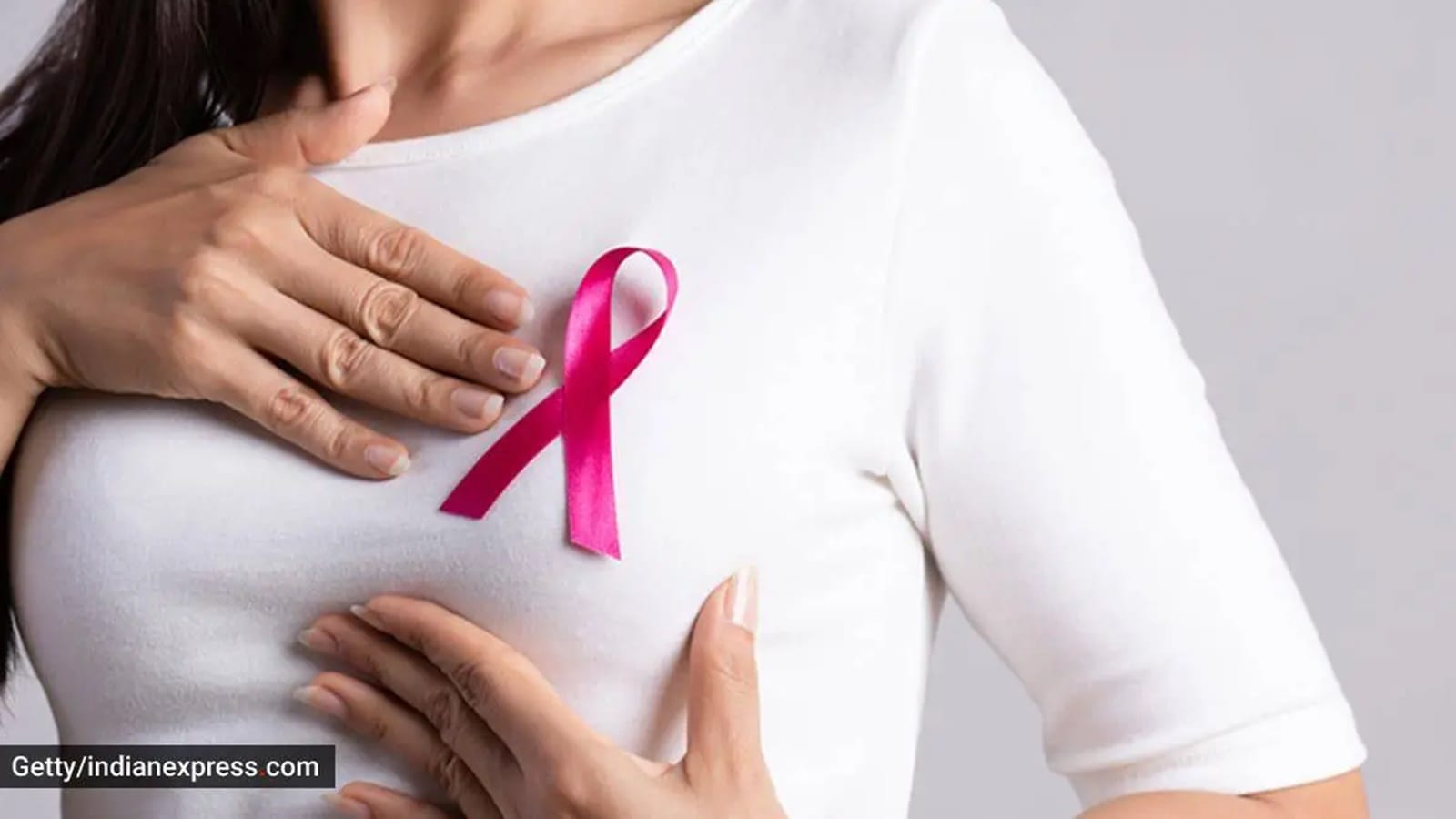Hina Khan has been battling breast cancer with an indomitable spirit. While being highly grateful to the pool of doctors and supporters, she recently opened up about the first time she felt a lump in her breast, calling it “not a very nice feeling”. “I don’t think I have spoken about it. This is the first time I am speaking to you all and letting you know. Do you guys know how I found out that I have cancer? Scans, tests, doctors, oncologists…those came later. I think a decade back, my gynaecologist had taught me how to self-examine,” said Hina at the Healthcare Heroes Summit & Awards 2025.
The video snippet, which has been trending, shows the Kasautii Zindagii Kay actor admitting that she followed the practice “religiously,” which saved her from seeking medical care at the last stage.
“Every year, I used to get scanned. I used to self-examine every 15 days. I would not have found out because I had no symptoms. I had no pain. I had nothing at all. Agar main woh self-examination nahi karti, toh shaayad main stage 3 se stage 4 par pahuch jaati. Last stage par pahuch jaati and kisi ko pata bhi nahi chalta kyunki mujh khud pata nahi chalta. Mujhe khud koi idea nahi tha ki mere saath kuch ho raha hai because I had no symptoms. (If I had not self-examined, I would have reached the last stage and nobody would have known because I myself would not have known because I had no symptoms). So, on one such occasion, I could feel a lump. That was not a very nice feeling. I felt this was off. I was like, What is this?”
 This is why a self-breast exam is necessary (Photo: Getty Images/Thinkstock)
This is why a self-breast exam is necessary (Photo: Getty Images/Thinkstock)
Let’s understand the importance of self-breast examination to reduce breast cancer risk.
Dr Tanveer Aujla, senior consultant, obstetrician and gynaecologist, Motherhood Hospitals, Noida, called self-breast examination a “simple method to detect breast cancer”. “In this method, the individuals are advised to check their breasts regularly and look for any unusual change or lumps that can be an indication of breast cancer. It is best to do it once a month. Women can also perform breast examination a few days after their period ends, when the breasts are less tender,” said Dr Aujla.
Women who perform regular self-exams often notice any new lump or unusual change early, even as small as 2.5 cm in size, noted Dr Mandeep Singh Malhotra, director, surgical oncology, CK Birla Hospital, Delhi.
“If a suspicious change is found, it can be reported to a doctor immediately for further evaluation. This habit increases awareness and empowers women to take charge of their health. When combined with clinical breast exams by a healthcare worker every 6 months or annually, and screening tools like mammography or ultrasound, the chances of detecting breast cancer at a very early, non-palpable stage increase dramatically. Early detection through such layered screening can lead to survival rates as high as 80–90 per cent,” emphasised Dr Malhotra.
How is it done?
Stand right in front of the mirror and look for changes in the size, shape, or skin of the breast. “Ensure that you stand straight. Then, gently feel each breast with the opposite hand. Also, do not forget to cover the armpit area too. You can perform breast self-examination while lying down or while standing, such as during the shower,” said Dr Aujla.
Story continues below this ad
Some women find it easier to feel the breast when the skin is wet. There is no rigid rule—what matters is consistency and awareness, said Dr Malhotra.
The primary objective of performing this test is to identify thickened areas, unusual discharge from the nipples, or lumps. “The goal is not to diagnose but to become familiar with one’s body so that any suspicious development is caught early,” said Dr Malhotra.
While feeling the breasts, one should use the palm of their fingers (not poking with fingertips), applying gentle to firm pressure, methodically covering the entire breast — either top to bottom, side to side, or in a circular (clockwise or anti-clockwise) motion, apprised Dr Malhotra.
What to note?
Understand that self-breast examination technique is not a replacement for routine checkups or mammograms, said Dr Aujla. Dr Malhotra concurred and shared that women should also remember that self-examination is just the first step, such that it should be followed by regular clinical exams and imaging tests as recommended, “because some cancers may not be felt but can still be detected through mammography”.
Story continues below this ad
Early detection of breast cancer can help save lives. “The treatment becomes more effective and promising while improving the quality of life. If you find any type of unusual symptoms, then immediately consult a doctor,” advised Dr Aujla.
DISCLAIMER: This article is based on information from the public domain and/or the experts we spoke to. Always consult your health practitioner before starting any routine.



